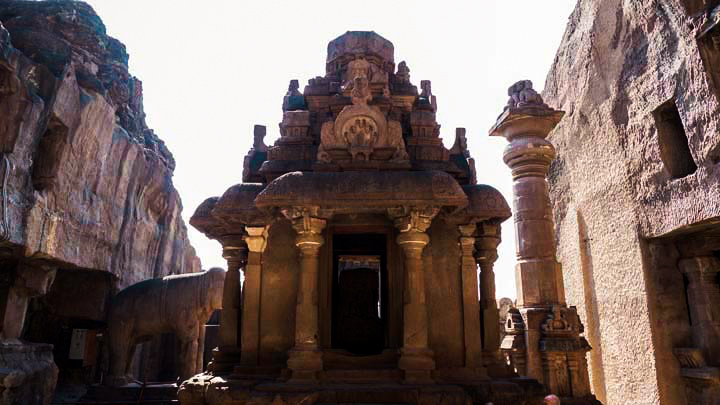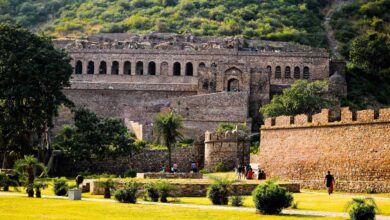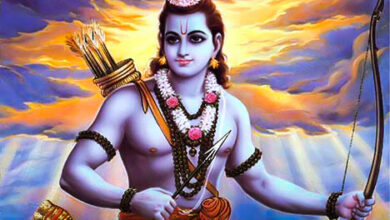Ajanta Ellora Caves, the Heritage Mystery and Facts
Ellora (also referred to as Elura and, in the past, as Elapura) may be a sacred site in Maharashtra, central India.

Krishna 1 built the Ajanta Ellora caves, he was the uncle of well known Dantidurga and it is a UNESCO World Heritage Site. It is located in Aurangabad, Maharashtra. The Ajanta Ellora Caves area unit is listed by the international organization agency as a World Heritage site and is widely legendary for its Hindu, Buddhist, and Jain temples and monuments that were inscribed from the native formation rock at intervals the sixth to eighth century Ce. The foremost spectacular example is that the eighth century Ce Kailasa temple, which is the largest rock-cut monument in the world at thirty-two meters high.
The Kailash Temple is the sixteenth cave, and it's one among the thirty-two cave temples and monasteries forming the magnanimous Ellora Caves. The historical records were designed by the eighth-century Rashtrakuta King avatar I between 756 and 773 AD.
What is Ajanta and Ellora Famous for? It is famous for their antique and exotic caves, mentioned below.
Hindu Caves
Located at intervals in the Sahyadri hills near Aurangabad, Ajanta Ellora is the most vital second-wave site of ancient rock-cut style. Within the western face of 1 cliff, composed of volcanic rock, there area unit thirty-five caves and rock-cut temples, mostly made throughout the reign of the Kalachuri phratry within the sixth and seventh centuries cerium.

Ajanta Ellora cave Image
The earliest cave is the Hindu Ramesvara (no. 21), dating to the sixth-century cerium. Typical of early Hindu temples, there's associate inner sanctum (garbhagriha), a circumambulatory passageway for worshippers to run around, vestibules with double entrances, and intensive decoration via high-relief friezes and carvings portraying scenes from the Puranas sacred texts. Cave twenty-one has sliced stream goddesses on the outside, a Nandi sculpture at the doorway and within an area unit each an outsized performing arts Shiva enclosed by musicians and Durga homicide the buffalo demon king.
The Dhumal Lena cave (no. 29) appears to copy the notable cave at Elephanta Cave, suggesting an affiliation between Ellora and also the Kalachuris.
The Ravana-ka-Khai cave (no. 14) was in all probability dedicated to a Hindu deity. It's a sizeable walk-around passage and columned hall resulting in the inner sanctum.
Kailasa Temple
The Kailasa temple (structure no. 16) is one of the foremost spectacular monuments within the world, and it's the most extensive rock-cut structure anywhere. Designed by Krisna I (r. 756-773 CE) of the Rashtrakuta dynasty to celebrate his success over the Pallavas, it raised even a lot of the grandeur of Ellora, that had been created capital by Dantidurga, Krsna's precursor, following his success over the rival Chalukyas in c. 753 CE. The Kailasa temple is the most northern example of the southern Dravida temple and is analogous to the Kailasanatha at Kanchipuram. It's a panchayatana or five-shrine temple.

As the name suggests (the name of Shiva's legendary dwelling house within the Himalayas), the temple was dedicated to Shiva, and indeed, could have been sought-after to copy his palace on earth. The sculpted scene of Ravana supports the architect's intention at bay to a lower place Shiva's mountain placed beneath the temple itself. The complete temple achieves an extra mountain result on a high platform that worshippers should climb via two monumental staircases.
The temple was designed by digging out from the sloping volcanic rock hill two large tranches, every ninety m long, and joining a connecting trench fifty-three m long. The temple was then sculpted from the remaining central portion. This resulted in a very 32-meter high structure that looks to come back out of the bottom. The temple features a three-storey vimana (tower) with an octangular dome and two large free-standing columns (Khwaja stambha) flanking the mandapa lobby with sixteen columns set in teams of 4. There's additionally the same old Nandi shrine with Shiva's sacred bull calf staring within the direction of the inner sanctuary.
Shiva is diagrammatic in sculptural additions like his spear and important person Nandi, that area unit carved on the two large columns. A huge linga (phallus) was held on within the inner sanctum. The entire temple carries relief carvings of scenes from the sacred Hindu texts the Mahabharata and Ramayana, likewise as teams of elephants and lions.
Also read: 9 Unknown men of Ashoka the Great
Buddhist Caves
The Buddhist caves square measure amongst the most essential excavated anyplace and were engraved later than the Hindu ones, most likely between the seventh and eighth centuries Ce. Their layouts square measure a lot of complicated and also the capitals within the colonnades square measure either the jar and foliage or chamfered cushions. Cave five is particularly grand and remarkably deep. It's seventeen cells and a large rectangular hall with two rows of ten columns between that square measure set stone benches in 2 rows. That performance remains a mystery on the far side, the surmise that monks gathered there for assemblies of some type.

Ajanta Ellora cave Image
The interior decoration of those caves displays figures of Buddha in his varied guises and lots of Bodhisattvas, some being the earliest instances, as an example of Tara. Many of the inner sanctum squares are flanked by a Bodhisattva figure. There square measure samples of Hindu influence within the depiction of four-armed statistics, with the carving in Cave eight being the earliest such example nonetheless discovered.
Cave twelve is the most ornate of the Buddhist caves, whereas the Visvakarma cave (no. 10) has one in all the most important seated Buddha figures. The last cave was, in all probability, cut in c. 650 CE and, once an oversized open court area, presents a vastly spectacular facade on two levels. The bottom floor encompasses a four-column front, whereas higher than could be a porch with an oversized central chaitya window. On either aspect of this window that results in an indoor barrel-vaulted gallery could be a deep and richly sculpted niche and relief panels. The Dasavatara cave (no. 15) is of interest because it contains the sole important ancient inscription, during this case, describing a visit by Rashtrakuta Dantidurga, a neighborhood ruler, between c. 730 and 755 metal.
If you are traveling in India you must try the North-East Indian food, check-out the mouth watering north-east food: North-East Indian Food
Conclusion
So, this was the complete introduction about Ellora caves, situated in Maharashtra. There are many temples and caves inside the Ellora caves, and there are many things to explore.
Do follow us on Instagram and twitter simultaneously: Viralkida , @Viralkida1
If you are traveling to Ajanta Ellora Caves, Aurangabad Maharashtra, then you should check every detailed update on official website of Ajanta Ellora caves : www.Mahrashtratourism.gov.in





One Comment